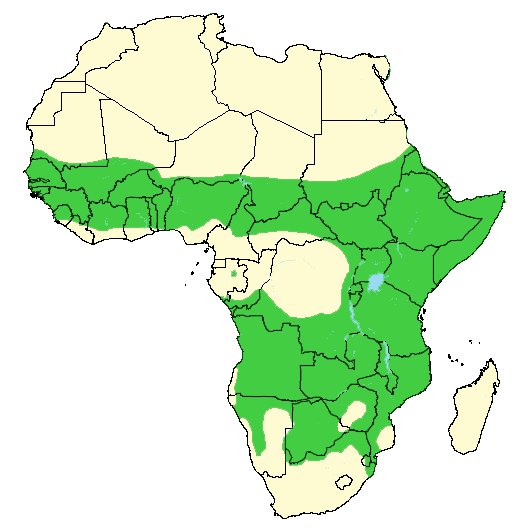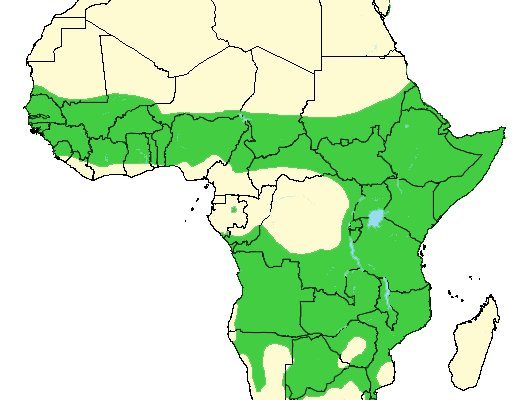
Spotted hyenas are often misunderstood, seen as mere scavengers or the villains of the animal kingdom. However, they are intelligent, social animals with complex behaviors and a surprising role in their ecosystems. Understanding where they live helps us appreciate their unique role in nature. So, let’s dive into the habitat and distribution of spotted hyenas, and see where they call home.
Natural Habitat of Spotted Hyenas
Spotted hyenas thrive in a variety of environments, but they particularly favor open savannas, grasslands, and semi-arid regions. Picture a vast, sun-drenched landscape dotted with acacia trees and sprawling plains. This is the kind of home that allows hyenas to hunt, scavenge, and socialize.
These clever hunters are not strictly tied to specific habitats. You’ll find them in diverse ecosystems, from the serengeti plains of Tanzania to the bushveld of South Africa. The key to their success in these areas is their ability to adapt to the environment and the prey available. Their strong jaws allow them to crack open bones, which gives them access to a food source that many other predators can’t reach.
Sociability is another aspect of their habitat needs. Spotted hyenas live in groups called clans, which can range from just a few individuals to over 90 members. This social structure is vital for their survival and hunting efficiency, so you can often find them near their clan territories, which they defend vigorously against intruders.
The Geographic Range of Spotted Hyenas
You might be wondering just how far these hyenas roam. Spotted hyenas have a wide geographic distribution across sub-Saharan Africa. They can be found in countries such as Kenya, Tanzania, Botswana, Namibia, and even parts of West Africa.
Their adaptability to various habitats means they can thrive in national parks like the Masai Mara and the Kruger National Park, where they often share the landscape with lions, elephants, and other iconic wildlife. However, urbanization and human encroachment are posing serious threats to their populations, leading to a decrease in their natural habitats.
While they are primarily found in the wild, you might also come across them in more unusual places, such as near human settlements. Some clans have adapted to living on the outskirts of towns, scavenging waste for food. This behavior highlights their intelligence and adaptability, but it also raises concerns about human-wildlife conflict.
Climate Preferences and Adaptations
Climate plays a significant role in where spotted hyenas live. They prefer warmer climates, typically found in areas with a moderate to low rainfall. These conditions support the grasslands and savannas they love, providing ample hunting grounds and denning sites.
During the dry season, spotted hyenas often roam more widely in search of food, which takes them into less populated areas. They have thick skin and short fur that protects them from extreme weather, enabling them to adapt to varying temperatures. Their keen sense of smell and exceptional hearing allow them to locate prey even in challenging conditions.
Here’s the thing: the social structure of hyenas is also influenced by their climate. In harsher environments, they may work together more closely, maximizing their effectiveness in hunting and defending their territory.
Hyenas and Their Role in Ecosystems
Understanding where spotted hyenas live also helps us appreciate their role in the ecosystem. These animals get a bad rap for being scavengers, but they are also skilled hunters. They play a crucial role in maintaining the balance of their habitat.
By hunting large herbivores, they keep populations in check, which can prevent overgrazing. When they scavenge, they help recycle nutrients back into the environment. Their hunting prowess means they can also control the populations of animals that might otherwise thrive unchecked.
You might picture a hyena lurking around a lion’s kill, but these scavengers are vital to the ecosystem’s health. Their presence allows for a diverse range of species to flourish, creating a balanced environment.
Human Impact on Spotted Hyena Habitats
While spotted hyenas are resilient, they face significant threats from human activities. Urban expansion and agriculture have led to habitat loss, pushing them into smaller and smaller areas. This often results in conflict with farmers who see them as threats to livestock.
Conservation efforts are crucial for ensuring that spotted hyenas continue to thrive in the wild. Protected areas, such as national parks and reserves, provide safe havens, allowing them to live and hunt without interference. Education and awareness about their ecological role can also help reduce negative perceptions and promote coexistence.
By understanding where hyenas live and why it matters, we can take steps to protect these fascinating creatures and their habitats.
In conclusion, spotted hyenas are not just misunderstood scavengers; they are vital components of their ecosystems. From the savannas of East Africa to the outskirts of urban areas, their habitats are diverse, and their adaptability is remarkable.
As we learn more about where spotted hyenas live, we can better appreciate their role in the natural world and take action to protect them. Every creature has a part to play in the circle of life, and spotted hyenas are no exception. Embracing their complexity helps us understand the beauty and fragility of our planet’s ecosystems.

